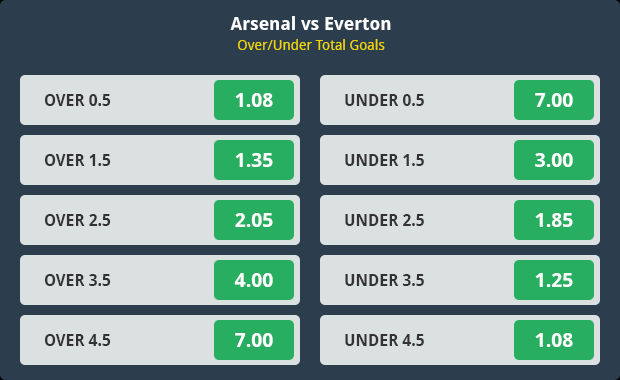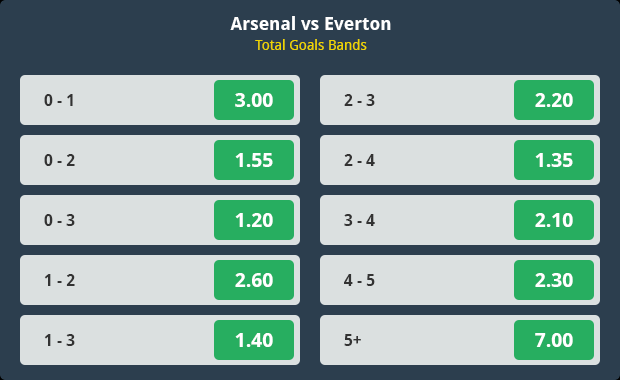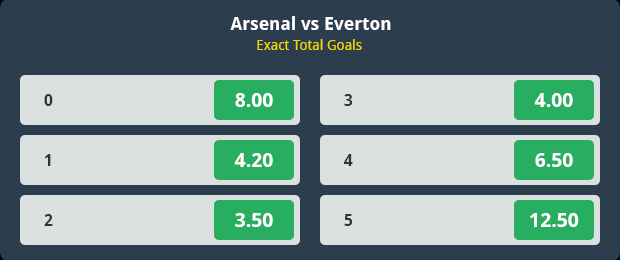Explaining All the Soccer Wagers Based on Goals Scored
How many times have you really enjoyed watching a soccer game that ended up goalless? We’re certain it’s not many. The occasional 0-0 draw can be entertaining to some extent, but games without goals are usually fairly mundane.
Why? Because GOALS are what make this sport so exciting.
It’s goals that get us out of our seats and cheering. Or commiserating, of course, when they’re scored against our favorite teams. It’s goals that make us think “Wow, how did he score THAT?” Goals are what we like to see, and there can never be enough of them as far as we’re concerned.
Goals are also an important part of BETTING on soccer. There are lots of different wagers that are based on goals, and some of them are among the best of all the soccer wagers.
If you know how they work and how to use them properly, goal-based soccer wagers can be VERY profitable. Sound good? Then you need to keep reading.
This article explains these wagers in detail and features some useful advice for when to use them.
Over/Under Total Goals
This is the most popular goal-based wager for soccer. It’s also very straightforward and probably the easiest one to make money from. Let’s take a look at how it works.
With this wager, you’re betting on whether the number of goals scored in a game will be higher or lower than a specified total. You can usually choose which specified total you want to bet on and must then decide whether to back the over or the under.
You back the over when you think there’ll be MORE goals than the specified total and the under when you think there’ll be FEWER goals.
We’ll now use an example to explain this wager in more detail. Here’s a typical betting market for over/under total goals.

Before we get into the detail here, we should first explain why each of the totals in this market includes a “half-goal.” This is simply to prevent wagers of this type resulting in a push. Because it’s not possible for a team to score half a goal, a wager on over or under one of these totals HAS to either win or lose. The actual total will ALWAYS be higher or lower than the totals listed above.
Let’s say you place a wager on over 2.5 goals here. The actual total cannot be exactly 2.5 goals, so you’re definitely going to win or lose this wager. To win, you’d need a total of three (or more) goals to be scored in the game.
This would take the actual total OVER the total you’re betting on, so you’d get paid out at the appropriate odds. In this case, the odds are 2.05, meaning a $10 wager would return $20.50.
If two goals or less were scored in the game, the actual total would be UNDER the total you’re betting on. You’d therefore lose your wager and forfeit your stake.
Please note that it doesn’t matter what the result of the game is for wagers of this type. Nor does it matter which team scores the goals. The only thing that matters is the number of goals scored in total. Three or more means you win, and two or less means you lose. It would be the other way around if you were betting on UNDER 2.5 goals.
If you bet on over 3.5 goals, then you need four or more goals to win. Three or less, and you lose. If you bet on under 4.5 goals, then you need less than five goals to win. Five or more, and you lose. If you bet on over 1.5 goals, then you need two or more goals to win. One or less, and you lose.
That’s pretty much all there is to this wager. Like we said, it’s very straightforward! The only other thing we should mention is the odds.
You’ll notice that the odds for the various betting options in the above market are quite different. Over 0.5 has odds of just 1.08, for example, while under 0.5 has odds as high as 7.00.
Can you guess why this is? It’s quite logical when you think about it. It’s obviously VERY likely that there’ll be over 0.5 goals scored but very UNLIKELY that there’ll be under 0.5 goals scored.
The odds for over/under 2.50 are much closer together. This is because over 2.5 goals is roughly as likely as under 2.5 goals.
It’s important that you understand these differences in odds and why they exist. They’re actually a big part of what makes the over/under total goals such a great wager. Because you can choose which total to bet on AND whether to go over or under, you can effectively balance your risk versus reward ratio.
You can choose to play it safe, for example, by betting the under on a high total. Or betting the over on a low total. The odds will be low, but you’ll have a good chance of winning.
Alternatively, you can take a risk and go for a bigger payout. Betting the under on a low total, for example, is high risk but high reward. The same applies to betting the over on a high total.
Regardless of whether you play it safe or take a risk, you still need to think carefully about how many goals are likely to be scored in a game. This means taking into account all the relevant factors that can affect the outcome of a game, and especially the ones that affect the number of goals scored. This is something we discuss in detail on the following page.
You also need to think about when it’s appropriate to use this type of wager. Although you can use it for any game that you want, that doesn’t mean you should use it for EVERY game. You need to be selective and try to identify the most suitable opportunities.
When to Bet on Over/Under Total Goals
In simple terms, the best time to bet on over/under total goals is whenever you’ve identified value in the betting markets. Not sure what we mean by this? Then you should follow the link provided and read our article dedicate to finding value in betting odds. It explains all about how to identify value when betting on sports, and this is something that you NEED to understand.
A proper understanding of value will make it reasonably easy to determine where the best opportunities for this wager lie. It’s really just a case of looking for games where you can make a reasonable judgment about how many goals are likely to be scored. Then you need to compare your assessment of likely outcomes to the relevant odds to see if any value exists.
There are few specific scenarios that you should definitely look out for. We particularly like to bet on over/under total goals in the following situations.
- Games where we expect one (or both) of the teams to set up very defensively.
- Games where there’s a significant difference between the quality/form of the attacking players and the quality/form of the opposing defensive players.
- Games where both teams really need a win and are likely to play very offensively.
Please note that these are not the ONLY situations where we bet on over/under total goals. These sorts of games do tend to present the best opportunities, though.
There’s usually a good chance of making accurate predictions about how many goals are likely to be scored, and that’s exactly what you need to do when using this wager.
Total Goals Bands/Brackets
This wager is essentially just a variation on the over/under total goals wager. You’re still betting on how many goals will be scored, just in a slightly different way. Instead of betting on whether the total number of goals scored will be over or under a specified total, you’re betting on an exact range of goals to be scored.
Bookmakers and betting sites offer a choice of goal “bands” or “brackets” for this wager. You have to decide which band the actual number of goals scored will fall into. Here’s an example to demonstrate how this works.

If you decided to back the 0 – 1 band, you’d need the number of goals scored to be within this range. So, you’d win if zero goals were scored, and you’d win if just a single goal was scored. With two or more goals scored, you’d lose.
The same principle applies to all the other bands listed here. If you backed the 2 – 4 band, for example, you’d need there to be either 2, 3, or 4 goals scored. Less than two or more than four, and you’d lose.
This variation of the total goals wager requires you to be more accurate in your predictions than the over/under variation. The tradeoff is that you can get better odds. It’s really just another way for you to balance your risk versus reward ratio when betting on total goals.
There’s plenty of flexibility here, too, as the available bands are different sizes. You can go for narrow bands (such as 0 – 1) if you want high risk and high reward. Or you can go for wider bands (such as 0 – 3) if you want lower risk and lower reward.
When to Bet on Total Goals Bands
We don’t use this wager a lot, to be honest. We almost always use the over/under wager when betting on total goals for the simple reason that it’s easier to get right. We prefer to have the better chance of winning, even if the odds aren’t quite as attractive.
There are SOME exceptions to this, but not many. We only ever use total goal bands when we’re confident that we can make a very accurate prediction about the number of goals that are likely to be scored in a game.
If we have good reason to believe that a game is very likely to end up either 1-1 or 1-0, for example, then it might make sense to bet on a band covering one or two goals.
Exact Total Goals
This variation of the total goals wager is the hardest one to get right. As the name suggests, you have to decide the exact number of goals you expect to be scored in a game. There’s no margin for error here at all, as you lose unless you correctly predict the precise total.
Here’s an example of an exact total goals betting market.

As you can see, the odds are quite attractive for this wager. That’s why it’s quite popular among soccer bettors. They’re prepared to accept the high risks involved due to the chance to earn themselves a nice payout.
Although we understand the appeal of this wager, it’s not one that we recommend using. Why? Because it’s simply too hard to predict EXACTLY how many goals are going to be scored in a game.
It’s definitely possible to make an informed judgment about whether the number of goals in a game will be higher or lower than a specified total. It’s also possible to make an informed judgment about a likely range of goals to be scored.
Trying to predict a precise total, however, is basically just guesswork. And there’s no place for guesswork when making betting decisions.
Goals by Team/Half
The wagers we’ve mentioned so far have all been about betting on the TOTAL number of goals scored in a game. There are also wagers for betting on the number of goals scored by a specific team in a game and the number of goals in just one half of a game.
Both of these wagers work in the same way as the over/under total goals wager in that you have to decide whether the number of goals will be higher or lower than a specified total.
With the “goals by team” wager, you can choose to bet on the number of goals scored by either team. If you think that one team will score more than three, for example, you’d bet on over 2.5 for that team.
With the “goals by half” wage, you can choose to bet on the number of goals scored in either half. If you think that there won’t be many goals in the first half, for example, you’d bet on under 2.5 (or under 1.5) for the first half.
These wagers are harder to win than the standard total goals wager, so we don’t recommend using them too often. There are a few scenarios where they’re worth considering, though, as we’ll now explain.
When to Bet on Total Goals by Team/Half
We like to use the goals by team wager in both of the following scenarios.
- When a team with a weak attack is up against a team that is strong defensively.
- When a team with a strong attack is up against a team that is weak defensively.
In the first scenario, we’d look to bet the under for the team with the weak attack. In the second scenario, we’d look to bet the over for the team with the strong attack.
We like to use the goals by half wager in the following scenarios.
- When a team that usually starts games fast is up against weaker opposition.
- In games between two attacking teams that both tend to start fast.
In both these scenarios, we’d look to bet over the over on first-half goals.
Both Teams to Score
The both teams to score wager is usually abbreviated to BTTS. It’s exactly what it sounds like it is – a bet on whether both teams will score in a game. It’s usually presented like this.

If you think that both teams are going score at least one goal, you back yes. You back no if you think that neither team will score or that only one team will. That’s all there is to it. This is a VERY simple wager, and one that we like a lot.
We use the BTTS wager frequently. All you have to do is make an informed judgement about how likely it is that both teams are going to score, and that’s something you can do for most games.
Carrying out the appropriate research and analysis should give you an excellent chance of making an accurate assessment.
There aren’t really any specific scenarios that we look for with the BTTS wager. It can be suitable in pretty much any situation, to be honest. It’s just a matter of assessing how a game is likely to play out, and then deciding if there’s a good reason to bet.
You’ll find some more detailed advice on using the BTTS wager on the following page. This also features some recommended strategies for most of the other wagers discussed above.
Before we finish, we should point that we’ve only focused on the “primary” goal-based wagers in this article. There are several other soccer wagers related to goals, and most of them are classed as props or specials. Here are some examples.
- Time of first goal
- Time of last goal
- First team to score
- Last team to score
- First player to score
- Last player to score
- Anytime goalscorer
- Total goals (odd or even)
- Half with most goals
- Goals in both halves (yes or no)
You’ll find more details on some of these wagers in the following article. It’s dedicated to the various props and specials available for soccer and also explains exactly what a prop bet is.
 75%
75% 80%
80%
 Latest UFC 317 Odds for Topuria vs. Oliveira and More
Latest UFC 317 Odds for Topuria vs. Oliveira and More  RANKED: The Best and Worst US States for Gamers in 2025
RANKED: The Best and Worst US States for Gamers in 2025  Deciding if Casino Bonuses Are Worth it at Online Casinos
Deciding if Casino Bonuses Are Worth it at Online Casinos  UFC 316 Betting Guide with Latest Odds and Top Picks
UFC 316 Betting Guide with Latest Odds and Top Picks 